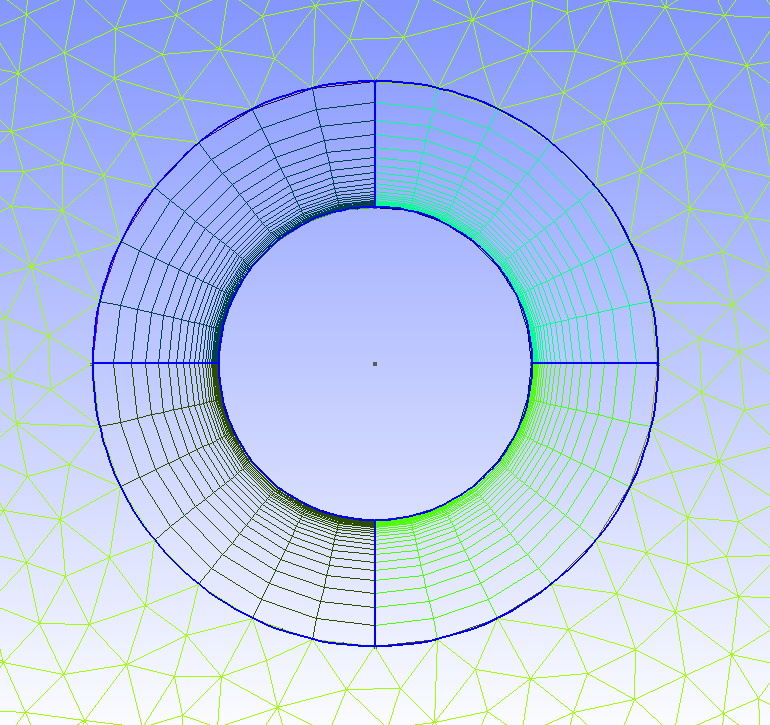

- #GMSH STRUCTURED EXTERNAL MESH 3D GENERATOR#
- #GMSH STRUCTURED EXTERNAL MESH 3D SOFTWARE#
- #GMSH STRUCTURED EXTERNAL MESH 3D CODE#
You can see those additional points which are the centers of the circle arcs of the "square" sides. Surface Loop(25) = Īs usual we need to define all the lines connecting points, then planes, and finally volumes. Surely after to create real 3D mesh one has to define its boundary plane As we'll use transfinite algorithm hs can be arbitrary To make a cube one has to create 8 vertices (with Gmsh's GUI, for example, but in fact it's simpler to create the points in an editor):
#GMSH STRUCTURED EXTERNAL MESH 3D SOFTWARE#
All GEO files from the sections below can be found in the repository. Gmsh can be downloaded from You can use Gmsh meshes in QuickerSim CFD Toolbox for MATLAB - free software version can be downloaded from our website. Its design goal is to provide a fast, light and user-friendly meshing tool with parametric input and flexible visualization capabilities.
#GMSH STRUCTURED EXTERNAL MESH 3D GENERATOR#
Its design goal is to provide a fast, light and user-friendly meshing tool with parametric. Gmsh is an open source 3D finite element mesh generator with a built-in CAD engine and post-processor.
#GMSH STRUCTURED EXTERNAL MESH 3D CODE#
Gmsh usually used with the finite-element code GetDP so by default it generates tetrahedral meshes, like one below.īut it is possible to make hexagonal meshes with it. Gmsh is an open-source 3-D finite element grid generator with a build-in CAD engine and post-processor.

Subsequently, we compared the values of the maximum velocity and the pressure at the center of the minimum calender gap. We have constructed a coarse mesh of M c 10 4 volumes and a dense mesh with M d 9 × 10 4 elements. For each meshing step, all structured mesh directives are executed first, and serve as addi-tional constraints for the unstructured parts1. And finally workflow vim -> blockMesh -> paraFoam is rather slow. This mesh is chosen after a mesh-independence study.For a 2D case it's rather simple to make an utility to calculate coordinates of a point on the arc of a given radius passing through two vertices, in a 3D case it's less obvious. Mesh grading is a good thing but for example to make a cube mesh with a higher density near the walls, one has to cut the cube into 4 blocks and make consistent grading in each block.Soon it becomes rather annoying to look for the block #4 or #17 to correct gradings or densities. But when blockMesh reports about errors in the mesh description it also uses these automatic numbers of entities. So while constructing a mesh one can, for example, use vim with +relativenumber and blockMeshDict opened in two splits (see screenshot). To construct a block, an edge or a boundary one has to know its vertices numbers, they are numbered automatically stating with 0. The 3D structured algorithms generate tetrahedra, hexahedra, prisms and pyramids, depending on the type of the surface meshes they are based on. OpenFOAM's blockMesh is rather simple and efficient way of building meshes but it has certain annoying features:


 0 kommentar(er)
0 kommentar(er)
